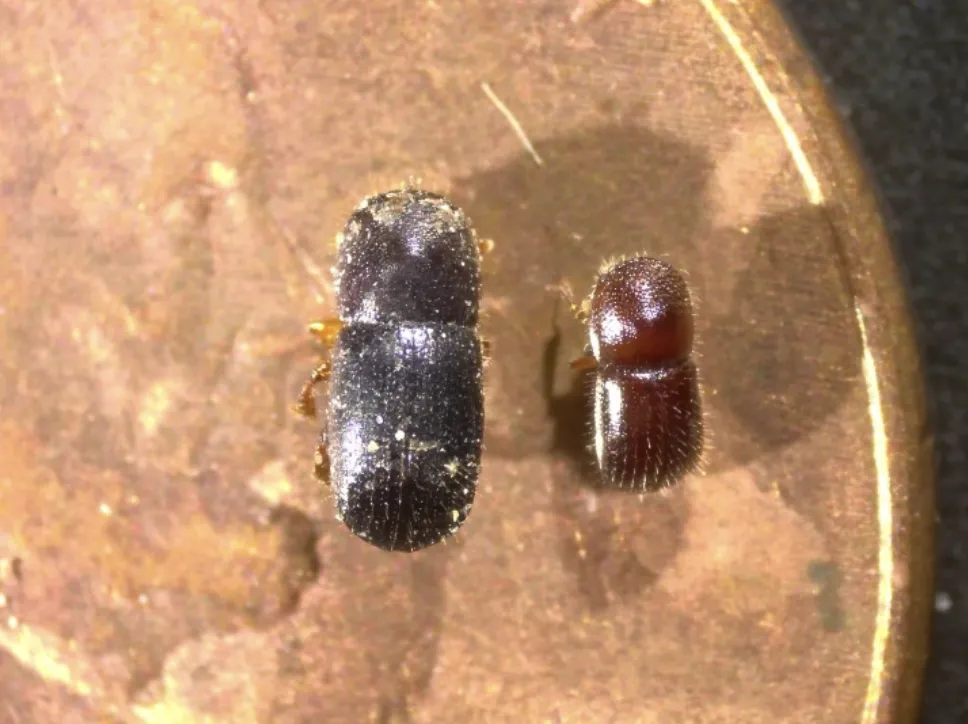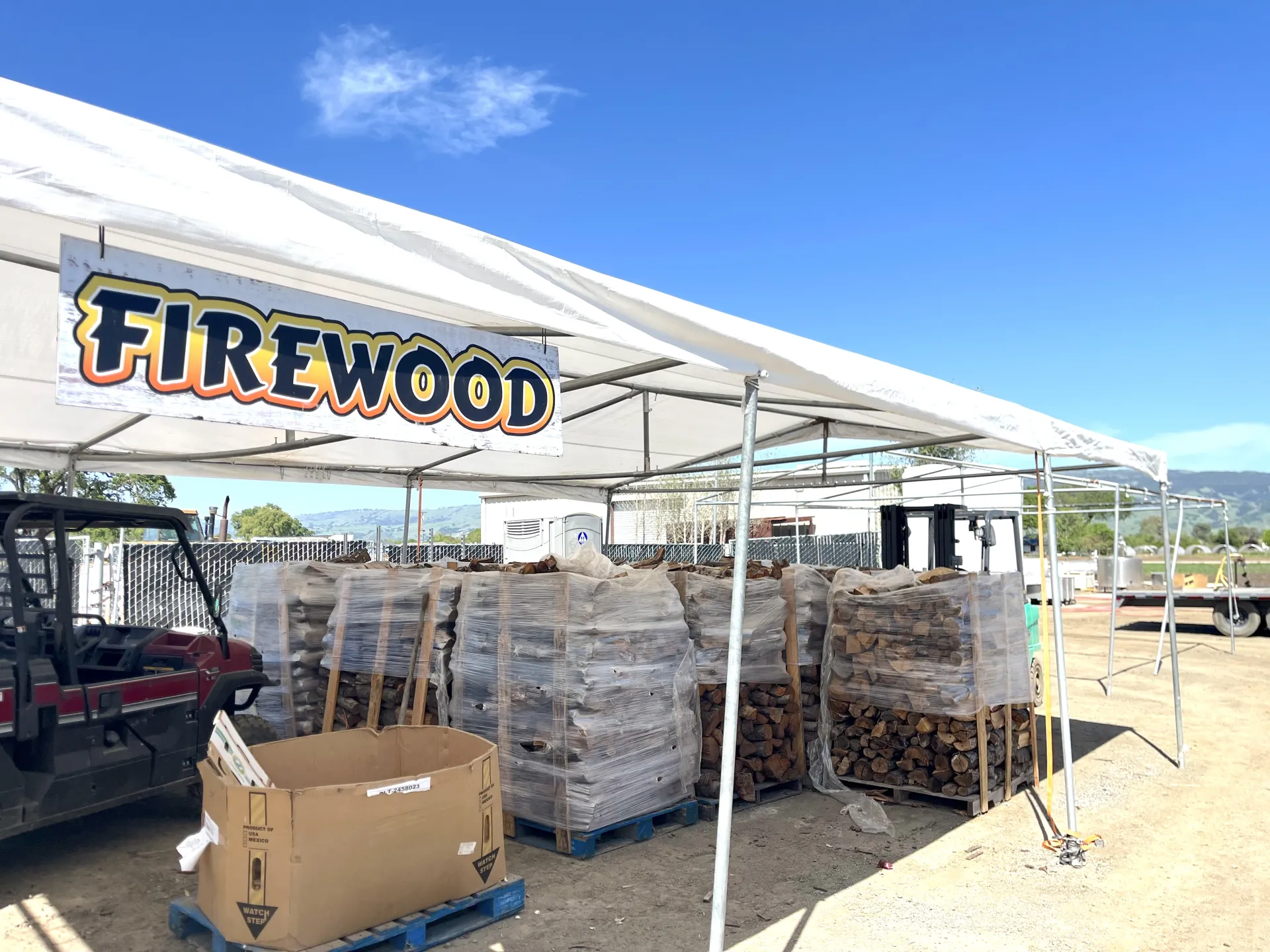While bringing firewood from home for your weekend camping trip may seem harmless, many invasive pests can hide in firewood and cause serious harm to California’s forests and urban landscapes. You can help limit the spread of these unwanted hitchhikers by collecting or buying firewood close to where you plan to use it.
What pests could be on your firewood?
Any pest that can infest or lay eggs on wood has the potential to be moved on firewood. Invasive insects like the goldspotted oak borer, the Mediterranean oak borer, and the emerald ash borer tunnel into wood and disperse when they emerge. Other insects like the spotted lanternfly can lay their hard-to-spot eggs on the surface of firewood. Some invasive tree diseases like sudden oak death can also spread to healthy trees from infested firewood.
Invasive shothole borers (or ISHB) are also notorious for spreading to new areas on firewood. ISHB are tiny, tree-boring beetles that infect trees with a fungal disease called Fusarium dieback. This disease can infect a wide range of tree species and is deadly to many California native and common landscape trees. ISHB can severely damage both forest ecosystems and urban areas, where street trees killed by this pest become tree-fall hazards and are expensive to remove and replace.
Two nearly identical ISHB species, Kuroshio shothole borer and polyphagous shothole borer, are responsible for killing tens of thousands of trees in Southern California. In 2023, an infestation was discovered in the city of San Jose, marking the first ISHB detection in Northern California. Movement of infested firewood is the suspected culprit behind this long-distance “jump” from Southern California up to the Bay Area.
A third invasive shothole borer species new to the West Coast, Euwallacea interjectus, was detected in the Santa Cruz mountains near Felton, California in 2024. Research and monitoring efforts are ongoing to determine the impacts and management recommendations for this new pest.

Help slow the spread of ISHB and other invasive tree pests:
- Don’t move firewood! Whether you use firewood at a campsite or in your fireplace, buy it where you burn it. A general recommendation is to buy firewood within 50 miles or less of where you plan to use it, but the closer the better. Many campgrounds sell firewood onsite; call the camp host to check ahead of time. Visit the California Firewood Taskforce and Don’t Move Firewood websites for more info.
- Learn about invasive pests known to spread on firewood. Visit these websites about invasive shothole borer, Mediterranean oak borer, goldspotted oak borer, and sudden oak death to learn how to identify these pests, where they’ve been found in California, which trees they can infest, and what to do if you find them.
- Learn to identify susceptible trees in your yard. Visit the ISHB website for a list of host trees and monitor them for signs of infestation.
- Report suspected infestations. If you find signs of ISHB or other invasive tree pests, report your observations to your local county agricultural commissioner or UC Cooperative Extension office.
Read this blog post about other invasive pests threatening California’s forests that can hide in firewood.

Firewood for sale. Photo by Karey Windbiel-Rojas, UC IPM.

